The only thing in this show longer than the necks is the minutes…
I can say this much for certain – the more I learn about this sport, the less I understand it. It’s certainly nothing specific to ballroom dancing – I suspect most sports/arts (and this one is some of both) are like that when you take the time to deep dive into them. But competitive dance remains a genuine puzzle to me. What constitutes success is so colored by the pair aspect of it – I wonder if pairs figure skating (or even more, ice dancing) is the same way?
The dominant – well, only – theme of this episode is “flower and frame”. Like so much about competitive ballroom, it seems relatively simple but is in fact very complicated. The woman is the flower, the man is the frame – I get the idea. It wasn’t the sort of frame I was imagining last week (more like a structural one), but it makes sense. Where the concept gets difficult is the question of balance. How is a leader supposed to fulfill the role of frame without disappearing into the background?
I guess if the answer to that question were easy, it wouldn’t be a professional sport. It points up that much more how surprising it is that Tatara is as successful as he is with his lack of experience. Sengoku cautions him to pace himself as he heads into the finals, but that’s the least of Tatara’s problems. Sengoku has prepared Tatara and Mako for their one-minute solo dance knowing that in the Tenpei Cup, it’s always a quickstep. But Marisa has foiled his plans by overriding the program and changing to a waltz. And when Tatara and Mako hit the floor, he’s shaking so hard the judges and audiences can see it.
It’s clear that Tatara has taken Kiyoharu’s advice to heart, and he and Mako have planned their strategy out in advance (and in secret). Just as clearly, Mako has never been put in this position before – though in his defense, Gaju did at least try and push her to assert herself in his boorish way. It strikes me that sibling partners are quite problematical in this sport, for the nuanced relationship between the older and younger will always be another complicating factor in the final equation. Tatara is nothing if not humble, and he embraces the idea that he needs to put his partner in the spotlight if anything too enthusiastically.
Here’s where my frustrating lack of understanding of this sport again asserts itself. Ask yourself this: if you’re standing in a museum or gallery looking at a Monet or Van Gogh, can you honestly say you’re going to remember what the frame looked like? If the judges and audience are staring only at Mako, why is that a technical flaw on Tatara’s part? Isn’t it the frame’s job to make people believe the painting is as magnificent as possible? I get that there’s a balance here – that if the leader s “greyed out” in the eyes of the judge, he’s taken the concept of framing too far. But it’s hard for me to see where that line is.
One thing I know is that Mako is unrecognizable from the dancer Gaju (and Marisa) knew. And that’s because she’s dancing with a leader willing to let that happen. Apparently the judges are supposed to grade on the leader’s technique and the symbiosis between the pair, and that if the judges aren’t looking at the leader’s technique, that’s a flaw. But it strikes my untrained eye that Tatara has in this case done the job he’s supposed to do. Apparently there’s more to it than that – and I guess Tatara and viewers like me are going to learn why that is together.


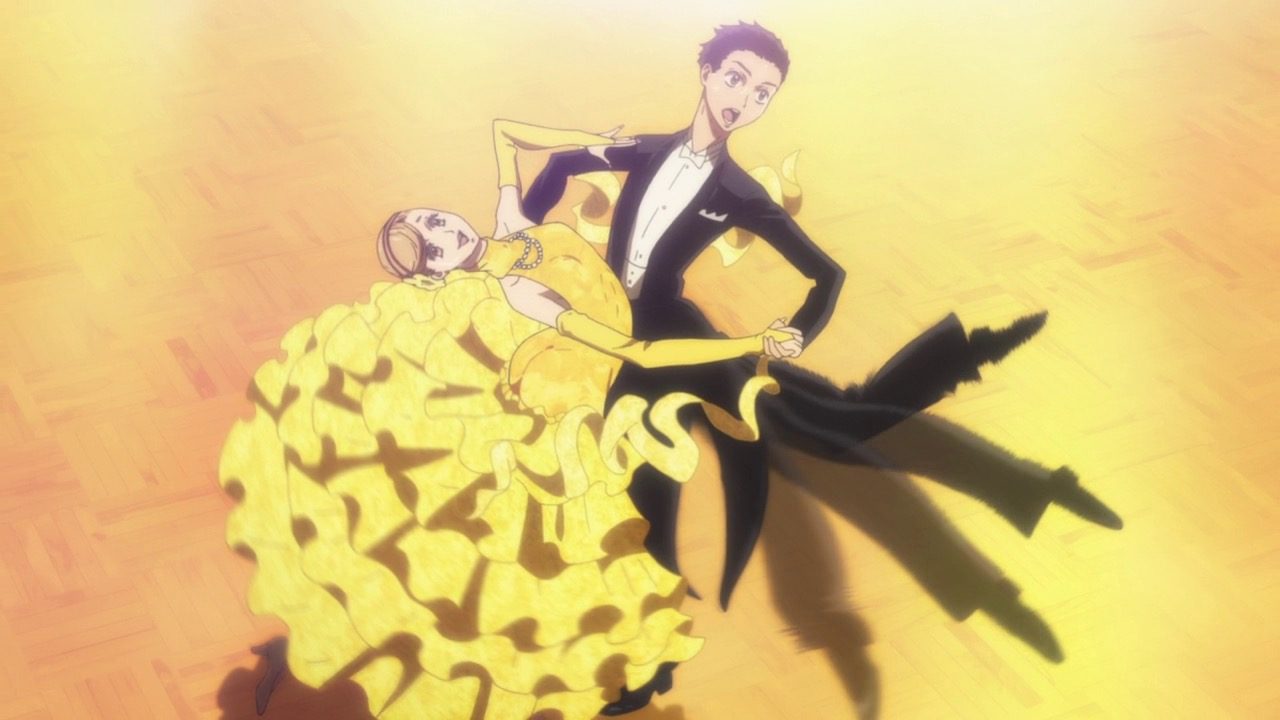
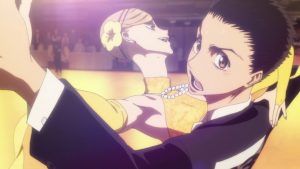

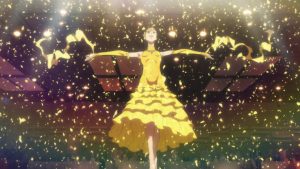
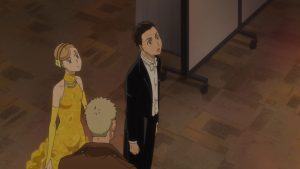


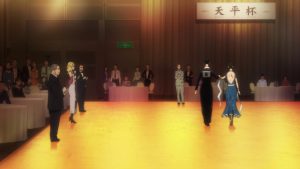
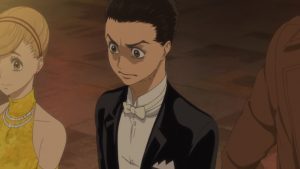
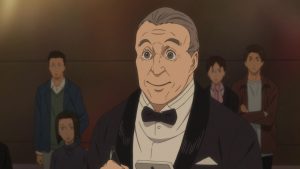

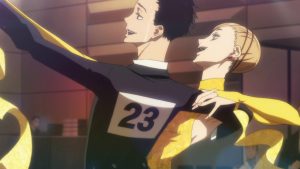

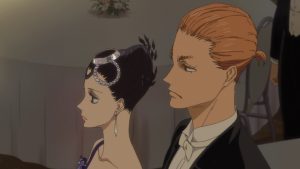
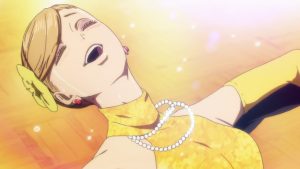

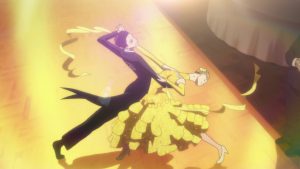
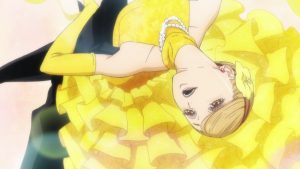
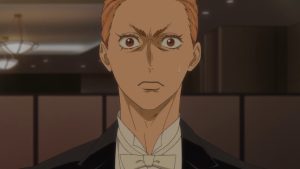
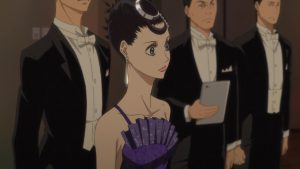
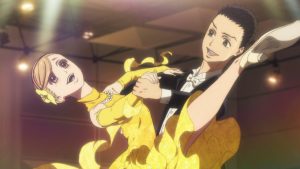

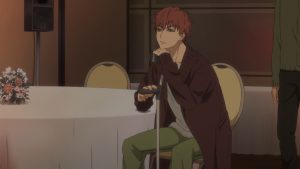
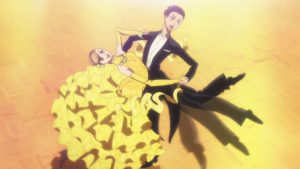
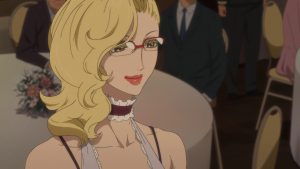

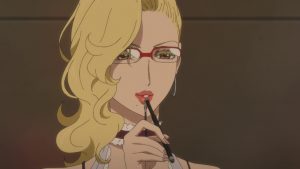


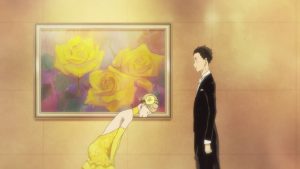
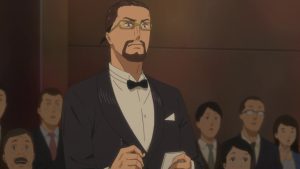

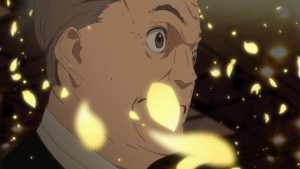
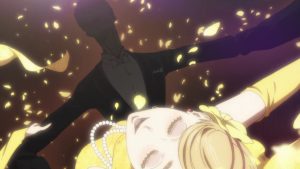
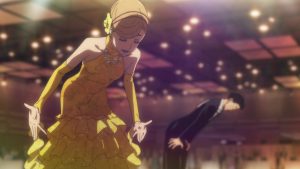
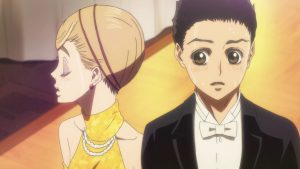
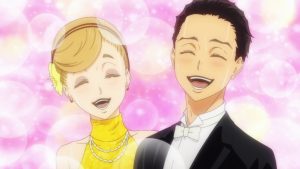
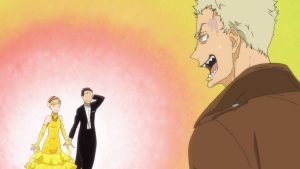
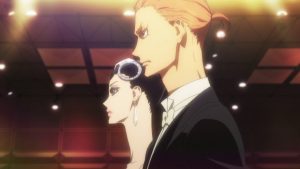
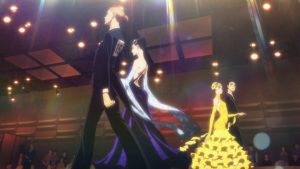


DauntingOverlord
September 4, 2017 at 12:07 amI believe the idea is that in dancing, the leader must maintain a strong, firm posture, so that the lady fully understands what the partner is trying to do. Without a strong frame, leading becomes impossible. Without it, the partner can’t be sure if the leader wants to go right or left. A better analogy that won’t confuse two different meanings of a frame of a painting and a frame of a house would be that a strong wire/stem props the flower up, so that it doesn’t bend in weird directions or looks like its wilting. At least, this is my experience from taking ballroom dancing lessons.
Guardian Enzo
September 4, 2017 at 8:25 amWell, the symbolism chosen by the series itself is specifically the frame of a painting.
DauntingOverlord
September 4, 2017 at 9:33 amYeah, that’s kinda what confuses me. It’s misleading. Makes me think that the author had known about framing, but since ballroom dancing is a more western sport, he had confused the two meanings of the word. But I’m not sure how framing translates over to Japan so I’m only left with speculations.
Earthlingzing
September 4, 2017 at 2:11 amHeh, I think you found the flaw there in their analogy.
Zilla
September 5, 2017 at 7:22 amOkay to all of this, but in artwork, framing is meant to enhance the picture and focus the viewer’s eye. So, their metaphor still kinda works. Say you have a nice rustic painting of a weather-beaten barn. Without a frame, it’s fine, but if you frame it in the right wood, it looks even better. The simple solid lines of the frame automatically stop your eye from traveling and keep it focused on the picture for longer. And if it’s really well framed you can also appreciate how the weathered wood of the frame has hints of the colors used in the picture, and how the texture of the wood echos the aging of the barn. Now, take that same picture and put it in a gold baroque frame . . . what you notice is the frame. And if you notice the picture at all, what you notice is how out of place it is,
So, for the judge’s, if they have been trained to judge on how the lead enhances the partner, but all they notice is the partner, then they have to wonder if the lead was any good at all . . . it might just be that the partner is so good they could have danced alone and done as well.